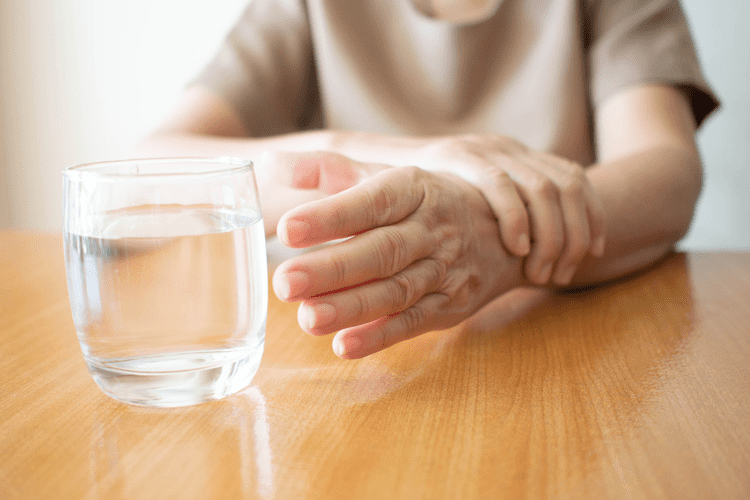A. Sexual differentiation of the brain is a result of testosterone produced by the developing testes in the male acting on the bi-potential brain to induce sexual differentiation of target brain regions. At puberty hormones from the testes and ovaries induce additional developmental events throughout the brain that further enhance or diminish sex differences in the brain. In the figure the bipotential brain is depicted in lavender that becomes more blue (masculine) or red (feminine) during development. Prior to puberty the brains are not fully formed and the hormones at puberty influence development further to result in the final phenotype. The bar at the bottom indicated that the sexual differentiation of the brain exists along a continuum from feminine to masculine.
- However, much work is needed in this area, particularly with respect to improving treatments for alcohol and marijuana use in pregnant women.
- A thesis of this article is that gender and sex differences in addiction are a complicated interaction between sociocultural factors and neurobiological sex differences.
- The dorsal striatum is important for well-learned patterns of behavior that can operate in the background without intentional control, which is usually exerted by the prefrontal cortex.
- Research also suggests women, especially mothers, face greater stigmatization when coping with addiction, making them less likely to reach out to family, friends, and medical professionals for help.
- In spite of the importance of this feminist research, their findings and analysis have yet to yield a significant impact on mainstream alcohol and drug research.
We define addiction as the chronic, compulsive use of a substance or engagement in a behavior, regardless of negative consequences. We use sex to refer to the characterization of an individual as female or male from biological and morphological features. As discussed below, there are similar sex differences in humans and rodents in addiction or addiction-like behaviors (respectively). This suggests that there are some basic biological differences between females and males that influence how each responds to drugs of abuse and engage in addictive behaviors (Becker et al. 2012; Perry et al. 2013b; Carroll and Anker 2010; Lynch 2006; Kerstetter et al. 2012; Becker and Hu 2008). Over the past few decades, alcohol use declined among emerging adults, although the declines were smaller than those seen among adolescents.21 Gender gaps narrowed as well. Historically, male college students were more likely to drink and did so more heavily than female college students, and college students drank far more than their peers not enrolled in college.
Alcoholics Resource Center
Nonetheless, although most large-scale randomized trials now stratify treatment randomization by gender, many still do not conduct gender-specific analyses and women are underrepresented in clinical trials. Moreover, treatments that have been available for a longer duration of time were originally studied almost exclusively in men. Thus, the efficacy of treatments such as disulfiram for alcohol use disorder is unknown in women. Although substance use is less common in pregnant compared with non-pregnant women, a substantial proportion of pregnant women use substances. The National Survey on Drug use and Health found that an estimated 4.7% of pregnant women used illicit drugs in the previous month, 13.9% used tobacco products, and 9.3% used alcohol (including 4.6% and 0.8% with heavy use); 21.7% of pregnant women reported using any substance in the prior month (CBHSQ, 2016).
In the first years of an Opioid use disorder (OUD) involving injecting Heroin, women are more likely to fatally overdose. This may be due to the continued use of prescriptions while simultaneously abusing Heroin. However, after a few years, women are actually more likely to survive Heroin abuse than men. VFor a fuller discussion of the differences between intracategorical and intercategorical see McCall 2014. Alcohol and Drug Foundation’s services are here to support communities across all states and territories. This is because of commonly accepted views of women as society’s care-givers and the upholders of our ‘moral and spiritual values’.1, 2 When women act in ways that don’t stick to this ‘moral course’, there tend to be very negative stereotypes attached to them for certain behaviours such as illegal activities.
Which drugs are most commonly abuse?
Psychologically speaking, women are more likely than men to have co-occurring substance use and mental health conditions. Women more often meet diagnostic criteria for mood disorders, depression, agoraphobia, PTSD, anxiety and eating disorders. They are also more likely to have been sexually or physically abused, and more likely to have experienced alcohol vs drugs interpersonal violence. Rates for sexual abuse in childhood and adulthood are reportedly higher in women than for men. These experiences can have a large impact on the types of services they require during their recovery. This includes clinically sound, trauma-informed programming that treats addiction alongside other mental health conditions.
A woman has a higher chance of quitting smoking successfully, plagued by fewer cravings and less grumpiness, if she stops soon after getting her period. On the other hand, women who abuse amphetamine experience a better subjective high during this same time, called the follicular phase of the menstrual cycle. If the stereotypical addict you picture is a man, you wouldn’t be entirely wrong — men are still much more likely to start using almost all kinds of drugs than women, and for every woman with a substance use disorder, there will be two or three men.
The Differences In Addiction Between Men And Women
Today, we know that there are a number of biological differences between men and women that impact the development of addiction. This is because women generally have more body fat and a lower volume of body water with which to dilute alcohol. Women also develop health-related problems due to substance use, such as breast cancer and nerve damage, faster than men do. According to the 2012 Monitoring the Future Survey, which tracks drug use among American adolescents and young adults, illicit drug abuse is more common among males in high school and college. Among high school seniors, for instance, 9 percent of males reported that they use marijuana daily, while less than 4 percent of females use the drug every day.
The social consequences of addiction in women are more relevant in the family, for example, with higher rates of divorce compared to addicted men [111]. When analyzing the subjective effects of drugs, sex could be a modulating factor in mental and addictive disorders [71], but results are controversial, with some studies showing no differences between men and women, others describing more subjective effects in men whereas others showed greater effects in women [16••]. Women entering substance abuse treatment programs present a more severe clinical profile attending to social, medical, psychological, and psychiatric comorbidities. Despite having used less of the substance and for a shorter period of time (later onset), the escalation of severity and decline in functionality is more rapid (telescoping effect, described before). Girls usually started using alcohol and other drugs as coping strategies to face depression, anxiety, and negative feelings [21], whereas men usually initiate the use of drugs influenced by peers or sensation-seeking [22]. The fact that women are more exposed to negative life events such as trauma and intimate partner violence is directly related with the rapid development of substance use and the narrowing gap between rates of drug use among genders [23].
Women’s intoxication was stigmatized, and women, who became drunk, were viewed as not respectable (Ettorre 2007; Bergmark 2004; Fillmore 1984; Warner 1997). Although the norms and values surrounding intoxicated women have evolved in recent decades, women’s intoxication is still typically viewed more negatively than men’s (Griffin et al. 2009; Hutton et al. 2016; Measham and Ostergaard 2009). Given that until the 1970s, research on men dominated the alcohol and drugs fields, the extent to which feminist researchers began to study young women and intoxication is significant and draws attention to issues of power inherent within our fields of research. This shift was due in part to the increasing numbers of women involved in alcohol and drugs research, who advocated for the development of research on women (Ettorre 2004; 2007) and was connected to a growing interest, throughout the 1980s, in gender issues in the social sciences (Gilligan 1982; Griffin 1993; McRobbie and Gerber 1975). According to the WHO, it is estimated that the prevalence rates of lifetime Intimate Partner Violence (IPV) in women undergoing SUD range between 40 and 70% compared to 17–35% in the general population [67]. There is a bidirectional relationship between alcohol use disorder and exposure to physical or sexual IPV and drug use also increases odds of IPV victimization [68]; there are three times greater odds of IPV perpetration in couples who use drugs [69].
The National Institutes of Health Office of Research on Women’s Health defined sex as biological differences between females and males, and gender is defined as socially determined roles that vary across cultures and overtime [2]. The World Health Organization (WHO) definition [3] of gender is the result of socially constructed ideas about the behavior, actions, and roles a particular sex performs. In relation to assessing and treating women’s medical issues, a gender perspective is required, transcending anatomical and biological aspects concerning health and sickness through life. Gender has implications for health across the course of a person’s life in terms of norms, roles, and relations. It influences a person’s risk-taking and health-seeking behaviors, exposure to health risks, and vulnerability to diseases. One of the priorities of WHO is to reduce gender inequality and remove barriers to treatment access [4].
Long-term cannabis abusers often have lower levels of achievement, higher levels of unemployment, and a greater rate of co-occurring mental health diagnoses. This figure is consistent over males and females; however, males tend to have higher rates of other co-occurring substance use disorders than females who are diagnosed with cannabis use disorder as an adult. Because women typically weigh less than men, alcohol tends to have a greater effect on them.









